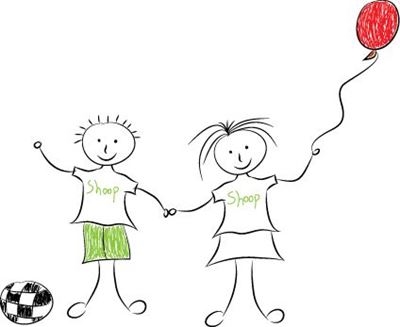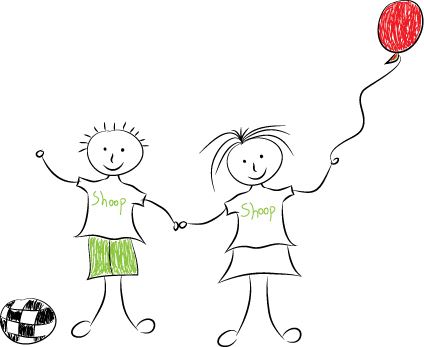So Why Organics and why Ethical?
A couple of years ago, we started the idea of creating organic clothes of super fine quality that would somehow help parents have quality time with their children and help children develop their cognitive abilities. We wanted our clothes to be produced in an ethical way, respecting the workers and the environment.
In the following lines we shall share with you what we have discovered on our way:
? Did you know that in c-o-n-v-e-n-t-i-o-n-a-l cotton farming:
“
It takes almost a 1/3 pound of synthetic fertilizers to grow one pound of raw cotton; and it takes just under one pound of raw cotton to make one t-shirt?! [1]
“
Many of the chemicals used in non-organic manufacture “ […] are toxic enough to be classified as hazardous by the World Health Organisation. These chemicals include some of the most poisonous substances applied to crops anywhere in the world […]”[5]
“
The US Environmental Protection Agency considers seven of the top 15 pesticides used on cotton in the U.S. as “possible,” “likely,” “probable,” or “known” human carcinogens. [3] [4]
“
Take the shirt off my back?
Hazardous pesticides applied during cotton production can also be detected in cotton clothing. In 2004, a team of scientists based at the Technical University of Lodz analysed garments manufactured from cotton originating from Uzbekistan, Kazakhstan, Turkmenistan, Tajikistan, and USA78. Their research uncovered detectable traces of parathion (WHO Ia) and endosulfan (WHO II), as well as numerous persistent organic pollutants such as aldrin, endrin and DDT. [5]
C-h-i-l-l-i-n-g isn’t it ?
“
Despite being particularly vulnerable to poisoning, child labourers throughout the world risk exposure to hazardous pesticides through participation in cotton production. In India and Uzbekistan children are directly involved in cotton pesticide application. While in Pakistan, Egypt, and Central Asia child labourers work in cotton fields either during or following the spraying season. Children are also often the first victims of pesticide poisonings, even if they do not participate to spraying, due to the proximity of their homes to cotton fields, or because of the re-use of empty pesticide containers. [5]
There is a very interesting “definition" of pesticides given from the "Toxics Action Center":
“
Pesticides are the only toxic substances released intentionally into our environment to kill living things. This includes substances that kill weeds (herbicides), insects (insecticides), fungus (fungicides), rodents (rodenticides), and others. [12]
“
Cotton is the world’s most important non-food agricultural commodity, yet it is responsible for the release of US$ 2 billion of chemical pesticides each year, within which at least US$ 819 million are considered toxic enough to be classified as hazardous by the World Health Organisation. Cotton accounts for 16% of global insecticide releases – more than any other single crop. Almost 1.0 kilogram of hazardous pesticides is applied for every hectare under cotton. [5]
“
In India, home to over one third of the world’s cotton farmers, cotton accounts for 54% of all pesticides used annually – despite occupying just 5% of land under crops. In a single 5 month observation period, 97 cotton farmers experienced 323 separate incidents of ill health. Of these 39% were associated with mild poisoning, 38% with moderate poisoning, and 6% with severe poisoning. [5]
“
Hazardous pesticides associated with global cotton production represent a substantial threat to global freshwater resources. Hazardous cotton pesticides are now known to contaminate rivers in USA, India, Pakistan, Uzbekistan, Brazil, Australia, Greece and West Africa. In Brazil, the world’s 4th largest consumer of agrochemicals, researchers tested rainwater for the presence of pesticides. 19 different chemicals were identified of which 12 were applied to cotton within the study area. [5]
On the other Hand,
O-r-g-a-n-i-c cotton farming:
“
IS FREE OF CHEMICAL PESTICIDES
“Organic cotton production is the only farming system by which cotton is produced
entirely free of chemical pesticides – and thereby without the risks that such chemicals pose to human health and the environment.” [5]
“
IS NON-TOXIC AND HYPOALLERGENIC
“Only certain biodegradable, low impact dyes and oxy, hydrogen peroxide bleach is allowed in organic certification. Therefore, organic cotton is non-toxic and hypoallergenic, thus ideal for those with allergies and chemical sensitivities” [10]
“
IS GMOs FREE
“No GMO (Genetically Modified Organisms) seed used” [11]
“
IS BETTER for WORKERS
“Growing organic cotton keeps farmers and their families safe. They are not exposed to toxic chemicals in the field or through their food and water supply” [11]
“
IS BETTER for the ENVIRONMENT
“No toxic chemicals are used in the growing of organic cotton. It doesn’t damage the soil, has less impact on the air, and uses 71% less water and 62% less energy. Conventional cotton uses about 16% of the world’s insecticides and 7% of pesticides.” [11]
“
NO SYNTHETIC FERTILIZERS
[…] Organic agriculture uses no synthetic pesticides or fertilizers, and no Genetically Modified Organisms (GMO). […][6]
So because of these and …more than these, we wanted our clothes to be organic and produced in an ethical way, respecting both humans and nature.
Our first thought was to produce them from scratch, but after a considerable thought and research we concluded that the investment required, was bigger than expected. So we decided to search for manufacturers that would share our dream and principles and who could produce our clothes for us. In that point we were very lucky to discover, maybe the most certified “green and ethical” apparel brand on the planet to whom we trust the production of our T-Shirts ever since.
This Brand is EarthPositive®. by Continental Clothing Co ®, a company that produces Gots Certified 100% Organic Cotton Apparel manufactured solely using renewable green energy and under social responsible and good labour conditions. Member of Fair Wear Foundation since early 2006 has managed to take the greenhouse gas emissions to pre-industrial levels reducing them by 90%. [7] (Wow !)
This is why we CHOSE:
EarthPositive® as our exclusive T-Shirt manufacturer:
We exclusively use EarthPositive® Blank T-Shirts which are
- printed with our Original Designs
- Shoop-Shoop branded
- and became a part of the Shoop-Shoop Experience! [Read More Here]
Having sorted out the Organic T-Shirt manufacturer sourcing issue with success, there was another important factor to deal with: The Ink that our designs would be printed on our clothes.
(Although there is no skin contact with the printing area and as a result, there is no safety issue here, however inks usually contain harmful substances so there is an environmental issue.)
The answer came from EPSON who has recently manufactured a new ink for Direct to Garment printing machines the “UltraChrome® DG” which is “Oeko-Tex Standard 100, Class I” Certified, which means that, it is safe to be used in textile products even for …babies! [8] [9]
After this, we only print our clothes with Epson “SureColor SC-F2000” DTG printers using exclusively EPSON “UltraChrome® DG” Inks.
So! At least the important things are sorted out!
Thank you for your patience …reading all this!
….However, you can find more information about our Blank T-Shirts and Ink that we use, in References No 7, 8 & 9. Please in case you discover a broken link, drop us a line.
And if you have any questions or you just feel like it, please don’t hesitate to contact us.
Thank you for your time
REFERENCES:
[1] Environmental assessment of textiles. Danish Environmental Protection Agency, working report 24, (2007). EDIPTEX: Lauresn, S. E., Hansen, J., Knudsen, H. H., Wenzel, H., Larsen, H. F., & Kristensen, F. M.
[3] “Cotton and Pesticides”, National Wildlife Federation, 2006/01/02, url: https://www.nwf.org/News-and-Magazines/National-Wildlife/Green-Living/Archives/2006/Cotton-and-Pesticides.aspx
[4] “The Truth About the Clothes We Wear: How Fashion Impacts Health and the Environment”, The Huffington Post 07/01/2013, Beth Greer, Bestselling Author, Environmental Health Advocate, Healthy Home Expert
[5] EJF, 2007, The Deadly Chemicals in Cotton, Environmental Justice Foundation in collaboration with Pesticide Action Network UK, London, UK. ISBN No. 1-904523-10-2
[6] “What does organic cotton mean?”, Pesticide Action Network UK (PAN UK), url: http://www.pan-uk.org/cotton/what-does-organic-cotton-mean
[7] Continental Clothing official website, url: https://www.continentalclothing.com/home/about
[8] Epson official website, url: https://www.epson.com/cgi-bin/Store/jsp/Pro/SeriesSureColorF2000/Specs.do?UseCookie=yes
[9] Epson UK official website, url: http://www.epson.co.uk/products/printers/large-format-printers/epson-surecolor-sc-f2000-5c
[10] “Organic Clothing“: http://theorganicsinstitute.com/organic/organic-clothing/
[11] “WHAT IS ORGANIC COTTON” : http://aboutorganiccotton.org/
[12] The Problem with Pesticides, "Toxics Action Center”, url: http://www.toxicsaction.org/








